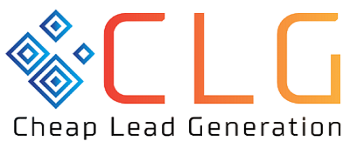

In today’s fast-paced and highly competitive business landscape, generating leads has become paramount for companies looking to thrive and stay ahead. But what exactly is lead generation? Why is it so crucial for businesses of all sizes? And how can you effectively harness its power to drive growth and success?
Get ready to demystify the definition and strategies behind lead generation as we take a deep dive into this essential aspect of modern marketing. Whether you’re a seasoned marketer or just dipping your toes into the world of business development, this ultimate guide will equip you with the knowledge and tools needed to master lead generation like never before.
So buckle up, because we’re about to unravel the mysteries behind attracting, engaging, and converting leads into valuable customers. Let’s get started!
What is Lead Generation?
In the world of business, lead generation plays a crucial role in driving growth and increasing revenue. But what exactly is lead generation? It refers to the process of capturing interest or inquiries from potential customers for your products or services. Essentially, it involves collecting information from individuals who have shown some level of interest in what you offer.
There are various methods used to generate leads, such as outbound marketing through cold calling or email campaigns, and inbound marketing through content creation and social media engagement. The goal is to attract prospects and convert them into paying customers.
Lead generation goes beyond simply gathering contact details. It’s about nurturing relationships with potential clients by providing valuable information that addresses their needs and pain points. By building trust and credibility, businesses can turn leads into loyal customers who continue to support their brand.
Successful lead generation relies on understanding the psychology behind why people engage with leads. Consumers today are more informed than ever before; they conduct research online, read reviews, compare prices, and seek recommendations before making purchasing decisions.
To capture their attention, you need to offer something of value – whether it’s informative blog posts addressing common industry challenges or free resources like e-books or webinars that provide actionable insights.
By utilizing effective lead generation strategies tailored to your target audience’s preferences and behaviors, you can create a steady stream of qualified leads ready to explore your offerings further.
In conclusion: Understanding what lead generation means in today’s digital landscape is vital for any business looking to thrive amidst fierce competition. By implementing smart strategies that resonate with your ideal customers’ interests and needs, you can generate quality leads that have a higher chance of converting into long-term customers. So take the time to demystify this concept further and unlock its immense potential for success!

The Psychology Behind Lead Generation: Why Do People Engage with Leads?
The psychology behind lead generation is a fascinating aspect of marketing. Understanding why people engage with leads can give businesses valuable insights into how to attract and convert potential customers.
One reason why people engage with leads is the desire for information. In today’s digital age, consumers have easy access to an overwhelming amount of information. They are constantly seeking answers to their questions and solutions to their problems. When a lead offers valuable information or addresses a pain point, it captures the attention and interest of potential customers.
Another psychological factor that drives engagement with leads is trust. People are more likely to engage with leads from sources they trust or perceive as authoritative in their industry. Building trust through thought leadership content, testimonials, and social proof can significantly impact lead generation efforts.
Furthermore, human beings are naturally curious creatures. Leads that pique curiosity or offer something unique or unexpected tend to generate higher engagement rates. Whether it’s a catchy headline or an intriguing offer, tapping into curiosity can be an effective strategy for capturing attention and driving action.
Emotions play a crucial role in engaging with leads. People often make decisions based on emotions rather than logic alone. Effective storytelling techniques that evoke emotions such as empathy or excitement can greatly influence engagement levels.
Understanding the psychology behind lead generation allows marketers to tailor their strategies accordingly and create compelling experiences that resonate with potential customers’ needs and desires.

Types of Leads and Their Importance
When it comes to Lead Generation, understanding the different types of leads is crucial. Not all leads are created equal, and targeting the right type can make a significant difference in your marketing efforts.
We have cold leads. These are individuals who have shown no previous interest in your product or service. While they may not be actively seeking what you offer, they could still convert if approached correctly. Cold leads require more nurturing and persuasion to move them further down the sales funnel.
On the other hand, warm leads are people who have expressed some interest in what you offer but haven’t taken any action yet. They might have subscribed to your newsletter or downloaded a free resource from your website. These prospects are more likely to convert into customers with proper engagement and targeted messaging.
Next up are hot leads – these individuals are actively interested in purchasing your product or service. They may have requested a demo or reached out for more information directly. Hot leads should be prioritized as they’re closest to making a buying decision.
We can’t forget about qualified leads – those that fit your target customer profile and exhibit high levels of interest in what you provide. Qualified leads not only demonstrate intent but also possess characteristics that align with your ideal customer persona.
Understanding the importance of each type of lead allows businesses to tailor their strategies accordingly. By segmenting their audience based on where they fall within this spectrum, companies can optimize their marketing efforts and focus resources on those most likely to convert.
Successful lead generation involves identifying which types of leads hold the most potential for conversion while nurturing relationships with prospects at every stage of the buyer’s journey.
Strategies for Effective Lead Generation:
In today’s highly competitive business landscape, Lead Generation has become more important than ever before. It is the lifeblood of any successful business, driving growth and revenue. By understanding what lead generation is and implementing effective strategies, businesses can tap into a pool of potential customers who are actively interested in their products or services.
Throughout this guide, we have explored the definition of lead generation and its various aspects. We have delved into the psychology behind why people engage with leads and discussed the different types of leads and their importance. But now it’s time to focus on one crucial aspect: strategies for effective lead generation.
1. Know your target audience:
The first step in generating quality leads is to understand your target audience inside out. Conduct thorough market research to identify their needs, pain points, and preferences. This knowledge will help you tailor your marketing messages specifically for them.
2. Create compelling content:
Content plays a pivotal role in attracting leads. Develop high-quality content that provides value to your target audience while showcasing your expertise as an industry leader. Utilize blog posts, videos, eBooks, webinars, and other formats to capture attention and encourage engagement.
3. Optimize landing pages:
When driving traffic to specific landing pages through ads or organic search results, make sure they are optimized for conversions. Keep them simple yet persuasive by including clear calls-to-action (CTAs), captivating headlines, user-friendly forms, social proof elements like testimonials or case studies.
4. Use SEO techniques:
Implementing search engine optimization (SEO) tactics ensures that your website ranks higher in search engine results when potential leads are looking for solutions related to your offerings.
Make use of relevant keywords throughout your website content, pages, titles, and meta descriptions.
Be mindful not overstuffing keywords which can negatively impact rankings
5. Leverage social media platforms :
Social media channels provide immense opportunities for engaging with potential leads.
Directly interact with users through comments, responses, and sharing valuable content that resonates with your target audience. Utilize social media ads to
5. Utilizing Social Media Platforms
In today’s digital age, social media has become an indispensable tool for businesses to connect with their target audience and generate leads. Platforms like Facebook, Instagram, LinkedIn, and Twitter offer a vast pool of potential customers just waiting to be tapped into.
To effectively utilize social media for lead generation, it’s crucial to understand your audience demographics and tailor your content accordingly. Engage with your followers through compelling visuals, informative posts, and interactive contests or giveaways. Encourage them to share your content with their networks to expand your reach organically.
6. Implementing Email Marketing
Another powerful strategy is implementing email marketing campaigns. Despite the rise of various communication channels, email remains a highly effective way to nurture leads and convert them into paying customers. Craft personalized emails that resonate with your recipients’ pain points and provide valuable solutions.
Segmenting your email list based on demographics or previous interactions allows you to send targeted messages that are more likely to resonate with each group. Don’t forget the importance of strong call-to-actions (CTAs) in every email – guide readers towards taking specific actions such as signing up for a free trial or downloading an e-book.
By combining the power of social media platforms and effective email marketing campaigns, you can create a dynamic lead generation strategy that reaches potential customers where they spend most of their time online. So get creative, build relationships through engaging content, and watch as those leads start pouring in!

Tools and Resources for Successful Lead Generation
Tools and resources play a crucial role in successful Lead Generation efforts. With the right tools, you can streamline your processes, automate tasks, and effectively track the performance of your campaigns. Here are some key tools and resources that can help you achieve success in lead generation:
1. Customer Relationship Management (CRM) Software: A CRM system is essential for managing leads throughout their journey. It allows you to store contact information, track interactions, and nurture relationships with potential customers.
2. Lead Capture Forms: These forms enable you to collect valuable information from website visitors in exchange for content or offers. They should be strategically placed on your website to encourage conversions.
3. Email Marketing Platforms: Email remains one of the most effective channels for lead nurturing. Tools like Mailchimp or HubSpot allow you to create targeted email campaigns, segment your audience, and analyze campaign performance.
4. Social Media Management Tools: Social media platforms offer powerful opportunities for lead generation. Utilize tools like Hootsuite or Buffer to schedule posts, monitor engagement, and identify potential leads.
5. Content Creation Tools: Creating high-quality content is vital for attracting leads. Use tools such as Canva or Adobe Spark to design visually appealing graphics and videos that resonate with your target audience.
6. Analytics Tools: To measure the effectiveness of your lead generation efforts accurately, you need robust analytics tools such as Google Analytics. These tools provide insights into website traffic sources, pages visited, and conversion rates.
In summary, the right set of tools can significantly enhance your lead generation strategies. Don’t hesitate to explore different options available based on specific business needs. With proper implementation, you’ll be able to optimize every aspect of your process from capturing leads all the way through converting them into loyal customers.
Measuring and Tracking Your Lead Generation Efforts Common Mist
In today’s competitive business landscape, Lead Generation has become an essential component of any successful marketing strategy. By effectively generating and nurturing leads, businesses can increase their chances of converting prospects into loyal customers. However, it is crucial to measure and track your lead generation efforts accurately to ensure optimal results.
One common mistake that many businesses make when it comes to measuring and tracking their lead generation efforts is relying solely on vanity metrics. Vanity metrics are those numbers that may look impressive at first glance but do not provide meaningful insights into the effectiveness of your lead generation campaigns.
Instead, focus on tracking metrics that directly impact your bottom line, such as the number of qualified leads generated, conversion rates, customer acquisition costs (CAC), and return on investment (ROI). By analyzing these key performance indicators (KPIs), you can gain valuable insights into which strategies are working well for your business and identify areas for improvement.
Another mistake to avoid is failing to integrate your lead generation efforts with a robust CRM system or marketing automation platform. These tools allow you to streamline and automate various aspects of your lead nurturing process while providing in-depth analytics and reporting capabilities. With a CRM or marketing automation platform in place, you can easily track the progress of individual leads through different stages of the sales funnel and tailor your messaging accordingly.
Additionally, don’t disregard the importance of A/B testing in optimizing your lead generation campaigns. Test different variations of landing pages, email subject lines, call-to-action buttons, or social media ad copy to determine what resonates best with your target audience. Continuously experimenting with different elements will help you refine your approach over time for better results.
Remember that effective measurement and tracking require ongoing monitoring and analysis. Set up regular reporting intervals to assess the performance of each campaign thoroughly. This will enable you to make data-driven decisions regarding adjustments or optimizations needed along the way.
In conclusion
Lead Generation is a vital aspect for any business looking to grow its customer base and increase revenue. By utilizing social media platforms, implementing.




